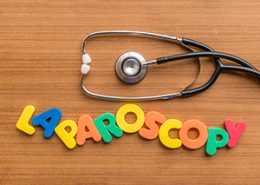What is IVF?
IVF is one of the most common methods of infertility treatment. In this method, the egg and the sperm of the couple are fertilized together in the laboratory environment and the primary cell of the embryo is formed. This cell begins to divide and form the embryo. The resulting embryo or embryos usually continue to grow in the laboratory environment for about 5 days.
After a few days, one or two embryos are transferred to the mother’s uterus. The remaining embryos are also frozen and stored for use in subsequent cycles.

The steps of doing IVF are:
1- Medications for Inducing Ovulation
Normally, one egg is released from the ovaries every month. While in the IVF process, more eggs are needed for fertilization. Therefore, by prescribing drugs, the doctor stimulates the ovaries to grow more eggs. Medications usually start on the first day of the menstrual period and continue for two weeks.
2- Ovum retrieval (puncture)
After stimulating ovulation and creating suitable eggs for fertilization, the eggs should be removed from the ovaries for in vitro fertilization. Oocyte retrieval is a minor surgical procedure performed under local or general anesthesia. The specialist doctor identifies the follicles containing eggs using ultrasound and removes the eggs from the follicles through a special needle.
3- Collecting a semen sample
To inseminate the egg with sperm in laboratory conditions, it is necessary to collect the man’s semen. Sperm collection depends on the conditions of the sexual partner. If the man’s sexual powers are in good condition, semen sampling is done normally. But suppose the man has azoospermia and cannot give a sample naturally. In that case, testicular sampling is done by the PESA method (taking sperm from the testicle through a syringe under local anesthesia) or the TESE method (testicular tissue sampling under general anesthesia). Finally, the collected sperm is examined in terms of motility and shape in the laboratory to select high-quality sperm for fertilization.
4- Embryo formation in the laboratory environment
Mature sperm and eggs are placed in a culture medium at this stage. Sperms that have high mobility move toward the eggs and fertilize them, and the primary cell of the embryo is formed. The primary cell of the embryo begins to divide, and it will reach about 8 cells after 3rd day. Finally, the embryos are transferred to the mother’s uterus between 3 and 5 days after fertilization.
5- Embryo transfer to the mother’s uterus
Embryo transfer is the last step in the IVF process. About 2 hours before the embryo transfer, the embryologist examines the formed embryos and selects high-quality embryos for transfer to the mother’s uterus. Embryo transfer is an outpatient surgery that does not require anesthesia. At this stage, the doctor, using special tools, transfers one or more embryos to the mother’s uterus to continue growing.
How many embryos are produced in each cycle of IVF?

The number of embryos formed in each IVF cycle depends on factors such as the age of the mother, the cause of infertility, and how the ovaries respond to drug stimulation in the treatment process. Usually, between 5 and 20 eggs are retrieved after ovulation induction in each IVF cycle. If the quality of sperms and eggs are suitable, more than 80% of the eggs are fertilized and become embryos. In each IVF cycle, according to the doctor’s diagnosis, one or two embryos are transferred to the mother’s uterus, and the remaining embryos are frozen for transfer in subsequent cycles.
In what cases is IVF recommended?
IVF is one of the most widely used infertility treatment methods. It is usually recommended to use this method in the following cases:
- Male infertility due to low sperm count, low sperm motility, or abnormal sperm shape
- Obstruction of one or two fallopian tubes • Ovulation problem and ovarian failure
- Low-quality eggs
- Suffering from endometriosis • Multifactorial infertility (infertility due to several different factors)
- Failure of other infertility treatments such as IUI
- Infertility of unknown cause
What is the success rate of IVF?

IVF success depends on many factors. Mother’s age is one of the most important factors influencing the success of IVF. As the mother’s age increases and after the age of 35, the quality of the eggs starts to decrease, and after the age of 40, this decrease in quality becomes more intense. Research shows that the chance of pregnancy with IVF in women under 35 is more than 40%, while the chance of IVF success in women over 40 is less than 20%.
Ways to improve your chances of IVF Success
In addition to the age of the mother, a suitable lifestyle also has a great impact on the success of IVF. Therefore, observing the following points by the couple can help increase the chances of IVF success.
- Having a healthy and nutritious diet
- Regular exercise
- Having a balanced weight
- Avoiding smoking and drinking alcohol Avoid excessive caffeine consumption
- Having proper sleep
- Use of medicinal supplements such as vitamin D and folic acid
- Stress management and positive thinking
- Avoiding chemicals and high heat to improve sperm quality
In addition to improving lifestyle, choosing an experienced doctor and advanced treatment center is also effective in IVF success. Therefore, before starting IVF treatment, you should be careful in choosing a doctor and treatment center. Learn more about ways to improve your chances of IVF Success: How to Increase Your Chances of IVF Success
When is it appropriate to modify the diet before doing IVF?

A proper diet provides the nutrients and energy needed to produce healthy eggs and sperm. Egg and sperm health increases the chances of IVF success.
Eggs usually spend a period of 90 days from the beginning of development to reaching maturity and being released from the ovaries. Sperms also take about 3 months to produce and mature. Therefore, nutritionists recommend that at least 3 months before the start of the IVF cycle, the diet should be modified and a proper and nutritious food plan should be taken. Learn more about diet before starting IVF: What Foods Help in Your IVF Treatment
Is bed rest needed after IVF and embryo transfer?
In the new care guidelines after embryo transfer to the uterus in the IVF process, Bed rest after embryo transfer is not recommended. The main reason for recommending no bed rest is that inactivity along with the medicines used for embryo transfer may cause blood clotting. Therefore, resting after embryo transfer can prevent blood supply to the embryo and disrupt the growth of the embryo. Blood clotting may also cause problems for the mother’s health.
So you don’t need to go to bed after visiting home after embryo transfer. In fact, after embryo transfer, a normal life without heavy activities is advised. You can sit and watch TV or do the usual household chores. It does not matter whether you are sitting or standing or sleeping in such a position.
The way you sit does not affect the success of the embryo transfer process and you can sit in a way that is comfortable for you.
Learn more about care after embryo transfer in IVF process: Do’s and Dont’s After Your Embryo Transfer
What are the reasons for IVF failure?
Although IVF is one of the most effective methods of infertility treatment, it is not always successful. IVF failure can occur for various reasons, which include:
- The weak function of the ovaries
- Reduction in the number and quality of eggs due to the old age of the mother
- Absence of embryo implantation in the uterus (can be caused by uterine disorders or fetal problems)
- Failure to develop the fetus due to its genetic and chromosomal problems
- Presence of uterine disorders and disorders of the mother’s immune system
- Improper lifestyle
- Embryo transfer in inappropriate medical centers and by a non-specialist
Learn more about reasons for IVF failure: Main Reasons for IVF Implantation Failure
What is the difference between ICSI and IVF?
The difference between IVF and ICSI is the method of egg fertilization. In the IVF technique, the egg is exposed to sperm in a laboratory container so that the sperm with high mobility enters the egg and fertilizes it.
In the ICSI method, the sperm with higher quality and mobility are separated from other sperm in the laboratory using a special method and are ready for injection. This method is usually used in cases where the quality of male sperm is low.
In what cases are the embryos frozen in the IVF process?
In an IVF cycle, after taking ovulation-stimulating drugs, a number of eggs are removed from the ovaries and fertilized with sperm in the laboratory, and embryos are formed. Then, after 5 days, the created embryos are transferred to the mother’s uterus.
But sometimes, the specialist doctor may not transfer the embryos to the mother’s uterus in the same cycle for some reason. In this case, the embryos are frozen for transfer in the next cycle.
The conditions that cause embryos not to be transferred in the same cycle are:
-
- The thickness of the endometrium (inner layer of the uterus) is not acceptable.
- The uterus has lesions such as polyps, myomas, etc. In such a situation, the problem related to the uterus should be solved first, and then the embryo should be transferred.
- When the patient is at risk of ovarian hyperstimulation (OHSS).
- Increased progesterone hormone levels
- Occurrence of vaginal bleeding during or before transfer

In addition to these cases, sometimes the number of embryos formed in one IVF cycle is high and only a limited number of embryos are transferred to the mother’s uterus in the same cycle. In such cases, the extra embryos are frozen for use in the next cycle.
The noteworthy point is that research shows that frozen embryos are not genetically different from fresh embryos, and the chances of pregnancy success with frozen embryos are higher than with fresh embryos.
What is the impact of endometrial scratching on IVF success?
Creating a scratch in the uterine wall can increase the chance of embryo implantation in the uterine wall and thus increase the chance of IVF success. In this method, the lining of the endometrium is superficially scratched by a special tool. This local scratch causes an inflammatory reaction and increases the secretion of growth factors. Growth factors help the implantation and development of the embryo.
The timing of endometrial scratching is important. The best time to scratch the endometrium is around the 20th day of the menstrual cycle. It is better to do this scratch one cycle before IVF and embryo transfer.
When is egg donation used for infertility treatment?
Egg donation is recommended for females with low ovarian reserve or whose egg quality is low for fertility. Aging is the most crucial factor affecting the reduction of ovarian reserve; therefore, with increasing age, the chance of pregnancy in women over 35 years old decreases drastically. Sometimes, chronic physical and mental diseases can also affect the quality of the eggs and cause problems in pregnancy.
Egg donation is one of the assisted reproductive methods that can help solve the problem of infertility in these patients. In this method, some eggs are retrieved from a donor. After the necessary tests in the laboratory, high-quality eggs are selected and fertilized by the IVF method with the sperm of the recipient’s spouse. The formed embryo is transferred to the mother’s uterus after going through the initial stages of growth in the laboratory environment. Learn more about egg donation and IVF with donor egg: All About IVF Egg Donation
How long does the IVF process take in the best infertility treatment centers in Iran?
The IVF process in the best fertility treatment and IVF centers in Iran and by the best infertility treatment doctors takes about 3 to 4 weeks. During this time, you will have routine tests, doctor visits, ultrasounds by a doctor, the use of medications, egg retrieval, embryo formation, and embryo transfer.

































